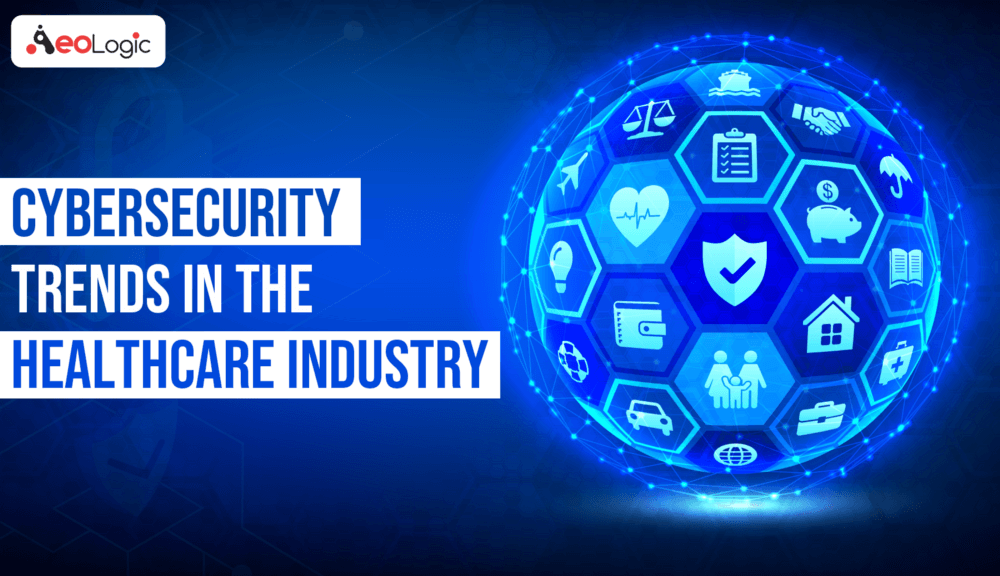Looking at the current threat intelligence, it has become essential for any organization to review and respond to its cybersecurity strategy. However, the healthcare space requires extra vigilant supervision like to regularly consult data prone to threat and update in the defense, where network interruption can be fatal. Additionally, the average healthcare organization spends almost $1.4 million recovering from a cyberattack, which directly impacts hospital revenue and can severely harm the reputation and trust — two cornerstones of patient experience and retention. To effectively minimize these kinds of risks, the IT teams must be constantly aware of the new methods designed to infiltrate networks and translate this into new tactics in their security efforts. Here, we look at top top cybersecurity trends in healthcare industry including Data proliferation, enterprise-level focus, continual rapid rise of identity and big data privacy.
Threats to the Healthcare Space
Healthcare has become the prime target for data and identity theft, it has become a growing threat for the industry. And if you don’t tackle and defend actively, your business and your customers will suffer as a result. These are some the widely spread threats that are committed by cybercriminals and how they tackle advantage from it:
Ransomeware
Even though it has now been more than 2 decades since the first ransomware attack happened, but till now, these attacks are as pervasive as ever. One way to address this problem is to use antivirus software.
IoT Attacks
Just as we adopt more and more advanced equipment and integrate them with smart devices, we are also becoming more and more prone to risk. What could earlier be just a breach of one device can now easily result in a breakout of the complete network. Just because each and every device in modern technical architecture is connected to each other.
This process of connecting multiple devices to one single universal network system is known as the Internet Of Things. It is the most advanced part of modern technology. But this can also leave someone prone to attacks who are unprepared. Not just one, but multiple devices.
Adware
Adwares is one of the most usual and common ways of how websites or even individuals collect your personal data and use it to their advantage. Criminals can use it to send you unsolicited email, try to sell your items, or mislead you into giving them your personal information like usernames, passwords, and payment information.
Teaching and training the entire staff about privacy settings and unsafe websites to use is the best to avoid this.
Cybersecurity Trends in Healthcare Industry
1. From IT to Enterprise-Level Focus
The evolution of Cybersecurity has happened over the last 10 years. It’s not just an IT-focused technical topic anymore, it’s a critical function of a safe, secure, and effective healthcare system. As we have seen the impact of cybercrimes, which often result in financial loss, patient safety risks, and public trust, Healthcare entities have now begun to view cybersecurity as the topmost concern in managing the risk of the enterprise.
2. Data Proliferation and Big Data Privacy
In 2020, data is considered to be the most valuable asset for any organization, Be it private or government. We exchange data in large quantities for a variety of business purposes and it’s not coming back. Technical giants like Google and Microsoft are largely investing in healthcare systems which includes masses of huge data sets for certain purposes that are yet to be cleared.
3. The Continual Rapid Rise of Identity Theft
2019 saw an unprecedented amount of identities stolen, to the tune of 158 million social security numbers and 16.5 million credit card numbers — and 27 percent of those thefts belonged to the healthcare industry. We have an increased rate of identity theft crime each year at about 50% per year. It’s an alarming situation.
Biometrics is one solution that we often use to make sure that the right and the authorized user is taking the action that they are trying to take. Another very basic but effective solution available is to block or lock down the access to certain websites from an internal IP range, rather than having the internet open all the time. These measures and many more available solutions help reduce the exposure of the attackers from the outside.
4. Ignoring Lines Between Personal and Business Activities Online
Ideally, there should be a fine line between the personal activities on the internet, and activities that are done from a business or professional perspective. For instance, many people use their official work email for personal things online, or sometimes people don’t know how to turn off certain privacy settings, like cookies, which tracks their every move.
Conclusion
Amongst every other industry, the healthcare industry has become a prime target for the theft of medical information databases, as it falls behind other industries in keeping the vital data safe. It is imperative that time and funding are invested in maintaining and ensuring the protection of healthcare technology and the confidentiality of patient information from unauthorized access.
And not just the Healthcare industry but for any industry to effectively stave off the threat of cyber security attacks and ensure that your organization doesn’t fall victim to a mass breach, it’s essential to know what kind of attacks are on the rise.






